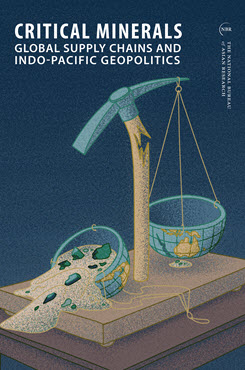Essay in NBR Special Report 102
Securing Critical Mineral Supply Chains in the Indo-Pacific
A Perspective from Australia
This essay examines the relationship between critical minerals and resource security and then considers Australia’s current strategy toward the critical minerals sector as well as its emerging international strategy.
EXECUTIVE SUMMARY
MAIN ARGUMENT
For decades Australia has been a major exporter of energy commodities to countries in the Indo-Pacific. The shift toward decarbonization regionally is thus of crucial importance to Australia economically and geopolitically. The country has large deposits of minerals and base metals that are important in the low-carbon energy transition, and both the federal and state governments are moving to further develop Australia’s innovation system to target critical mineral resources. This includes focusing on opportunities to increasingly participate in high value–added downstream processes and developing a number of international partnerships. Australia’s critical mineral strategy will continue to develop with an export orientation and a focus on downstream value-adding capabilities.
POLICY IMPLICATIONS
- Governments and companies should monitor ongoing developments in critical mineral policy in Australia.
- Australia’s open investment regime and mature mining sector mean that there are ample opportunities to invest and partner in critical minerals in Australia, including in downstream processing.
- It is crucial that governments work together to develop effective environmental, social, and governance and traceability standards in support of critical mineral development.
Llewelyn Hughes is an Associate Professor in the Crawford School of Public Policy at the Australian National University.



